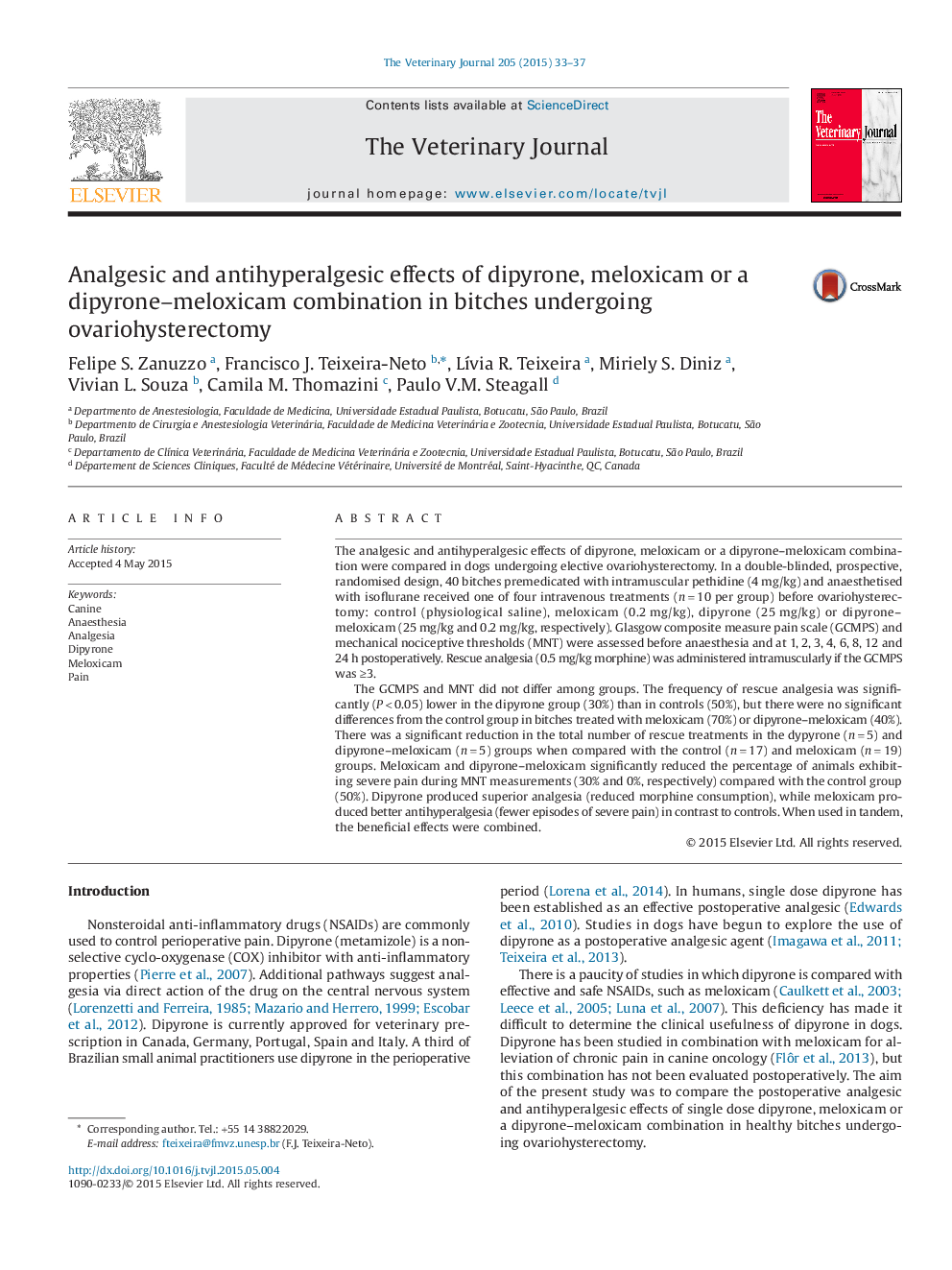| کد مقاله | کد نشریه | سال انتشار | مقاله انگلیسی | نسخه تمام متن |
|---|---|---|---|---|
| 5797393 | 1111750 | 2015 | 5 صفحه PDF | دانلود رایگان |

- The analgesic effects of dipyrone, meloxicam or a combination were compared in ovariohysterectomised bitches.
- Dipyrone produced superior analgesia than in untreated controls.
- Meloxicam produced superior antihyperalgesia than in untreated controls.
- The combined use of dipyrone and meloxicam produced both beneficial effects.
The analgesic and antihyperalgesic effects of dipyrone, meloxicam or a dipyrone-meloxicam combination were compared in dogs undergoing elective ovariohysterectomy. In a double-blinded, prospective, randomised design, 40 bitches premedicated with intramuscular pethidine (4âmg/kg) and anaesthetised with isoflurane received one of four intravenous treatments (nâ=â10 per group) before ovariohysterectomy: control (physiological saline), meloxicam (0.2âmg/kg), dipyrone (25âmg/kg) or dipyrone-meloxicam (25âmg/kg and 0.2âmg/kg, respectively). Glasgow composite measure pain scale (GCMPS) and mechanical nociceptive thresholds (MNT) were assessed before anaesthesia and at 1, 2, 3, 4, 6, 8, 12 and 24âh postoperatively. Rescue analgesia (0.5âmg/kg morphine) was administered intramuscularly if the GCMPS was â¥3.The GCMPS and MNT did not differ among groups. The frequency of rescue analgesia was significantly (Pâ<0.05) lower in the dipyrone group (30%) than in controls (50%), but there were no significant differences from the control group in bitches treated with meloxicam (70%) or dipyrone-meloxicam (40%). There was a significant reduction in the total number of rescue treatments in the dypyrone (nâ=â5) and dipyrone-meloxicam (nâ=â5) groups when compared with the control (nâ=â17) and meloxicam (nâ=â19) groups. Meloxicam and dipyrone-meloxicam significantly reduced the percentage of animals exhibiting severe pain during MNT measurements (30% and 0%, respectively) compared with the control group (50%). Dipyrone produced superior analgesia (reduced morphine consumption), while meloxicam produced better antihyperalgesia (fewer episodes of severe pain) in contrast to controls. When used in tandem, the beneficial effects were combined.
Journal: The Veterinary Journal - Volume 205, Issue 1, July 2015, Pages 33-37